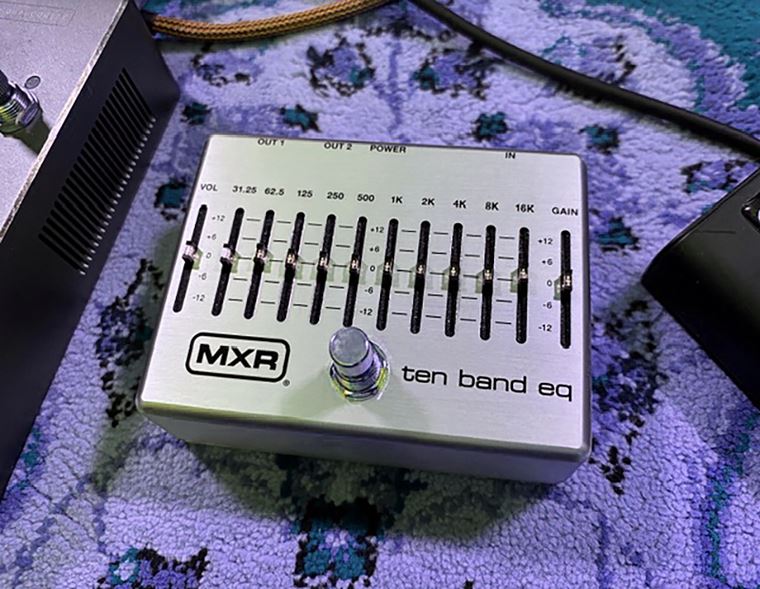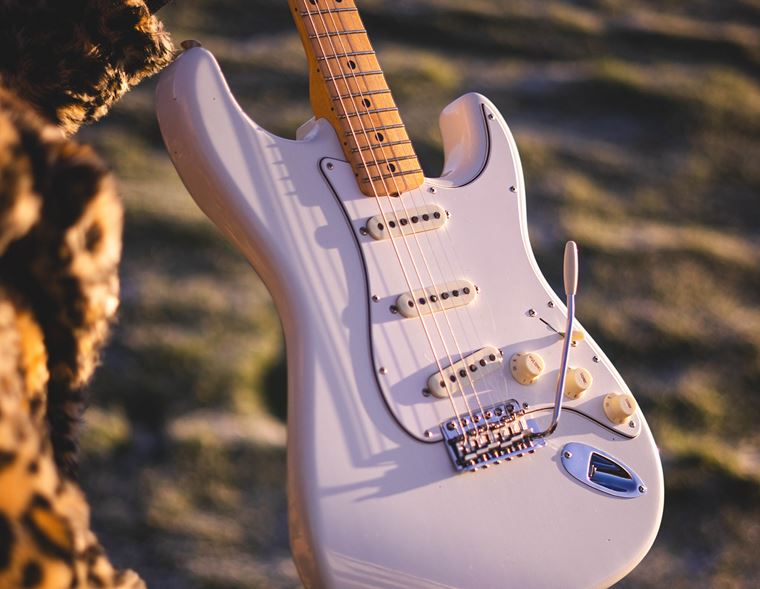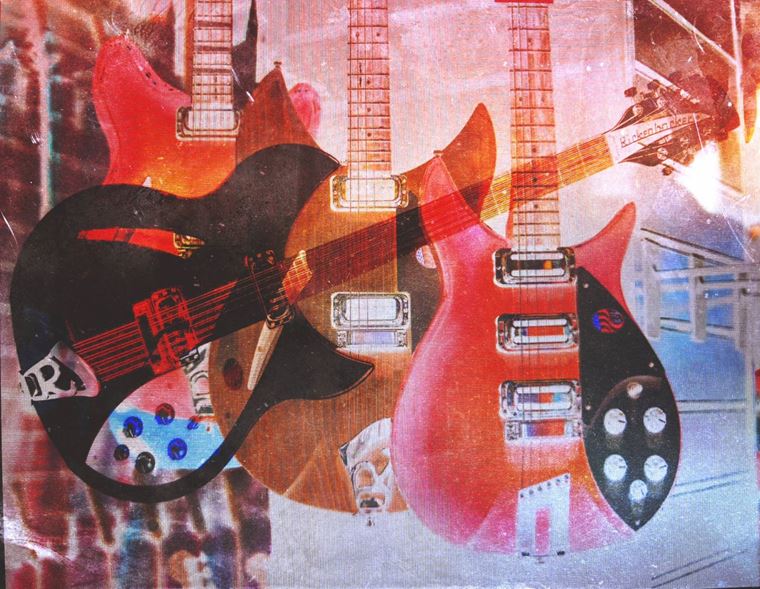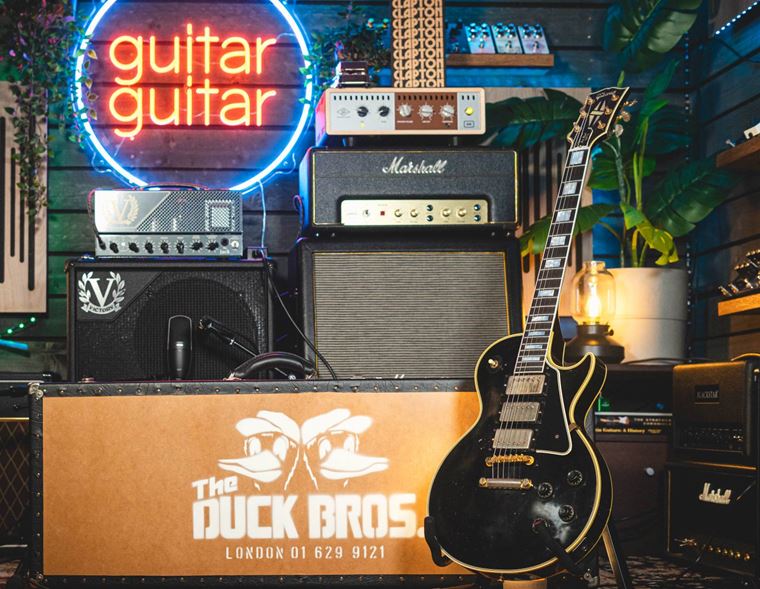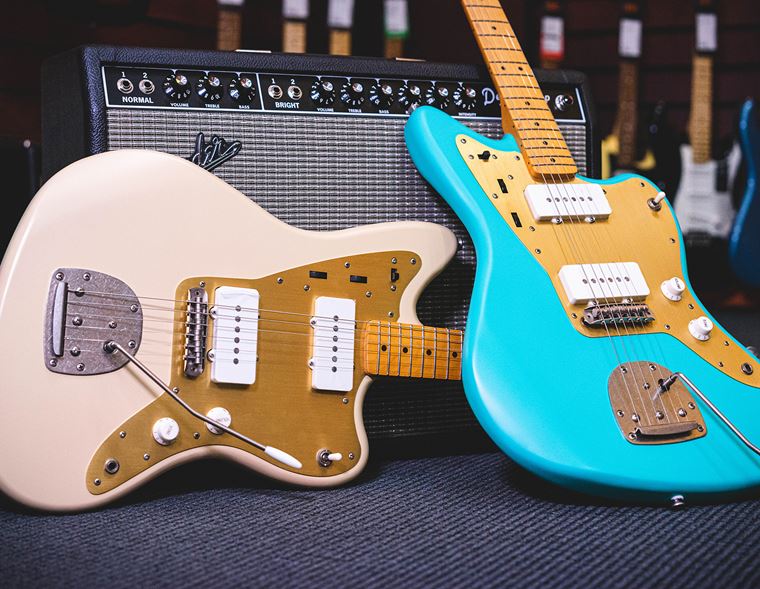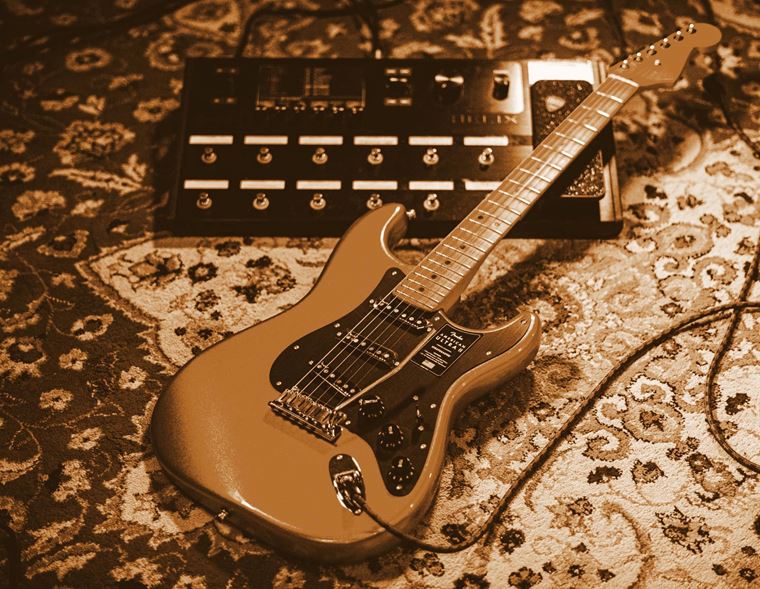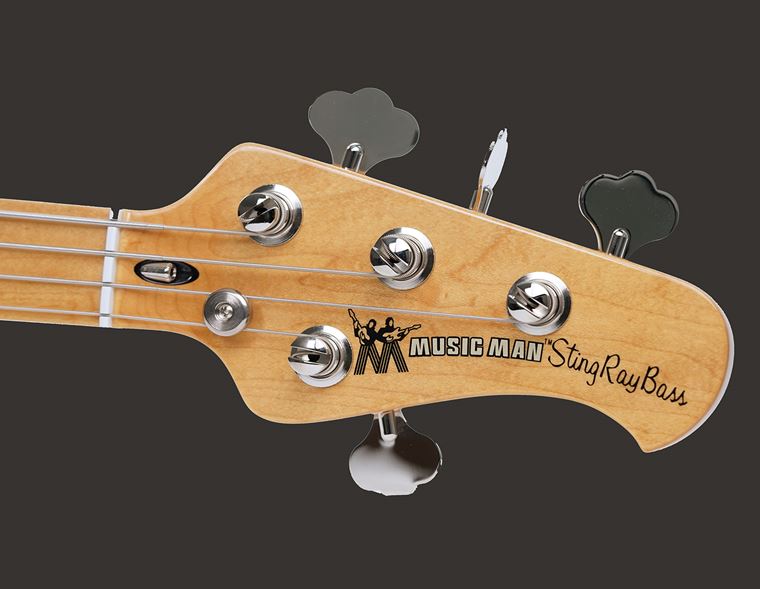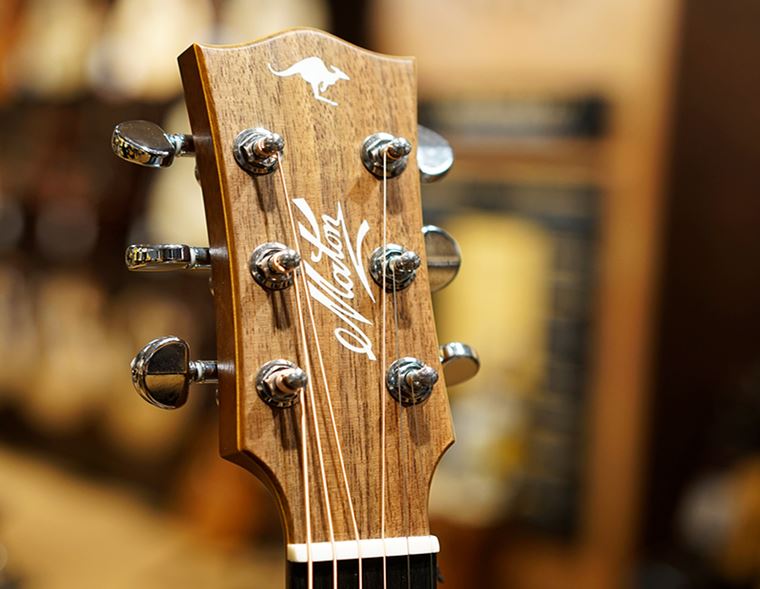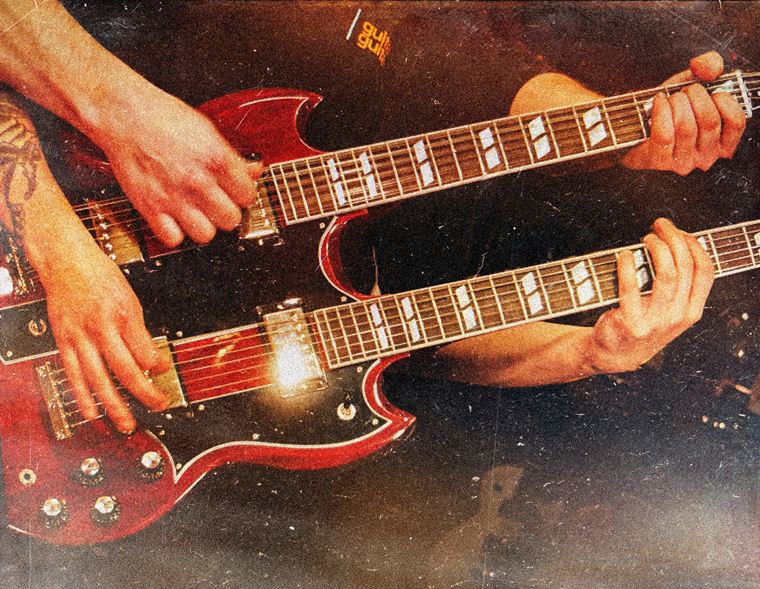Guitargon: Learn all the Guitar Jargon now!
Published on 20 September 2019
Guitargon. Guitar jargon.
It’s always a triumphant day when you create an entirely new word! We’ll see how quickly it catches on...
In the meantime, please allow us to explain ourselves in a slightly better manner. ‘Guitargon’ is, we have just decided, a descriptive term for all of the jargon used specifically with guitars and guitar-playing. It’s the type of word or phrase that seasoned players take for granted but newbies maybe don’t quite understand. There’s actually quite a lot of it out there! Not only that, there are lots of reasonably familiar terms being used that perhaps don’t quite mean what you think they mean...
With that in mind, we’ve compiled a list, which is neither definitive nor exhaustive, of these terms, along with the true definitions. This list is entirely subjective, like the best type of opinion-related things in life! Feel free to think up more; we’d be happy to add to this list of Guitargon!
Examples of Guitar Industry Jargon:
1. Riff
A riff is a recurring piece of music that is typically one or two bars long. It repeats again and again throughout the song and is often seen as the song’s musical ‘identity’. Example: the only part of Smoke on the Water that you bothered learning to play? That's a riff. The cool bit in Money For Nothing? Guitar riff!
2. Lick
Otherwise known somewhat more wholesomely as a phrase, a lick is a group of notes that make a fill or, when strung together, a solo. Licks can be thought of as your 'vocabulary' for when you want to improvise. This is why the term ‘phrases’ makes sense and ‘licks’ still doesn’t.
3. Shred/Shredding/Shredder
These terms all relate to the act of playing extremely fast notes on a guitar. To some, it is a derogatory term implying soulless application of technique. To others, the term is a badge of honour: of having worked hard to earn the ability to perform at Olympian speeds. ‘Shred’ is the verb, ‘shredding’ is the act and 'shredder' is the term used to denote the person committing the act. For context, Yngwie Malmsteen is a shredder and Noel Gallagher is not. Jimi Hendrix kind of is and isn't at the same time. We didn't say this would be easy!
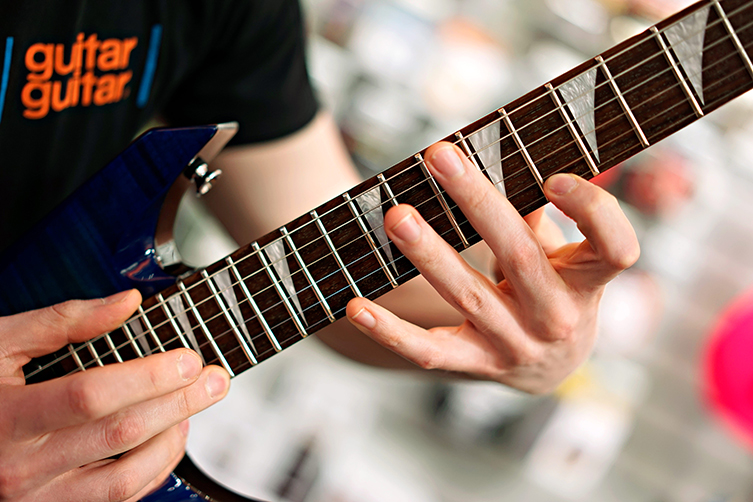
4. Whammy/Tremolo/Vibrato
This may get a little complicated. These three terms all describe the type of bridge you’d find on, say, a Fender Stratocaster or an Ibanez RG. One term is correct, one is wrong and the other is invented. All are used equally. We are referring to the type of bridge that has a metal arm attached: you manipulate the arm in order to change the pitch of your note. There are various different styles of this bridge, and all of them operate in a similar way to differing degrees.
Okay, so here are the cold, hard facts: 'tremolo' describes the volume of a note rising and falling at a regulated rate; therefore, Fender were entirely in the wrong when they called their bridge a 'tremolo' back in the fifties. Tremolo, correctly applied, is that stuttering pulse effect you get from classic amplifiers, the kind of sound that is all over old pop records and the Twin Peaks soundtrack. It's a lovely noise but has nothing to do with your guitar's bridge!
'Vibrato' is the raising and lowering of a note’s pitch incrementally. This does actually describe what this type of bridge does, so it’s right enough. However, vibrato is also a type of modulation effect (which in theory does the same thing but sounds quite similar to that tremolo effect we mentioned a second ago! Aaargh!) so that muddies the waters. Tremolo = volume pulses, vibrato = pitch fluctuations.
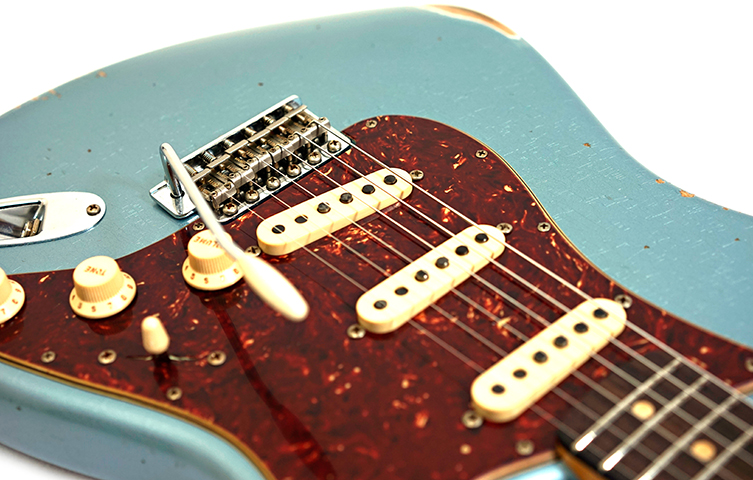
'Whammy', or whammy bar, means nothing per se. It's a made up term, but it's the only one that every player would instantly understand. To 'whammy' is to raise or lower the guitar’s pitch via the arm/bar. Great! ‘Whammying’ can be used as a term to describe what you’re doing. Therefore, a Strat has a ‘whammy bar’ and even though Fender don’t call it that, it’s perfectly fine to say that and everyone will know what you mean. So, to recap: a bridge with an arm in it can be called a vibrato bar or a whammy bar, but not a tremolo, even though most people still call it that. Stay safe and call it a whammy! Phew!
5. Floyd Rose
Floyd Rose is a person. He designed a type of whammy bar/vibrato/not a tremolo (see above) that allows extremely excessive pitch manipulating whilst keeping the guitar largely in tune by locking the strings in place. Other whammy bars don't offer this locked-in tuning feature, and so accordingly cannot perform in the same manner.
Floyd used his own name for this device, which is universally referred to as ‘a Floyd Rose’, or simply ‘a Floyd’. For examples of Floyd Rose whammy sounds, listen to most Eddie Van Halen solos. Whammy bars traditionally allow a few notes' worth of pitch drop, along with maybe a tone (two frets) or a minor third (three frets' worth) of up-bend (up-bend is when you yank up on the bar to raise the pitch of the note instead of pushing the bar toward the body to lower the pitch). Floyd Roses allow you to 'divebomb' from any initially-played note all the way down until the strings go completely (literally) slack and you can no longer recognise a specific pitch. Your guitar sounds like an angry wild animal. It's quite something.
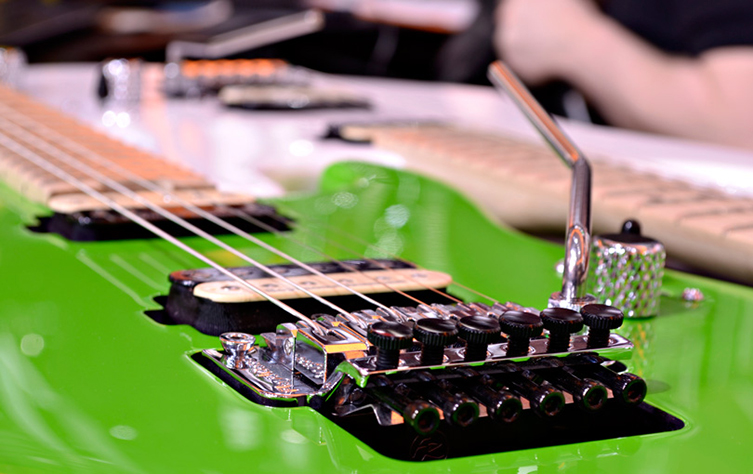
6. Single Coil Pickup
Guitar pickups are made from copper wire being wrapped around magnets. A single coil pickup, like you’d find on a Stratocaster or Telecaster, has one coil of wire wrapped around a single magnet. In general, you get more brightness and ‘twang’ from this type of pickup.
7. Humbucker Pickup
A humbucker pickup can either look like two single coil pickups shoved together, or they can be rectangles made of metal or plastic. These rectangles are actually just covers (like on a Les Paul) and the pickup inside is indeed not unlike two single coils shoved together. They are arranged to eliminate the annoying 'hum' you sometimes get with single coils. The copper is wrapped around both coils, resulting in more windings, and therefore more output. Humbuckers have less twang and a more beefy sound.
8. P90 Pickup
A P90 is a type of single coil pickup. Gibson use them a lot, and they are a little bit bigger than a typical single coil. Resultingly, they sound a little bigger too, and are in fact some people’s first choice for pickups because they tend to have a bit of everything: sharp and fat, jangly yet great for Hard Rock. P100 pickups are hum-cancelling versions of P90 pickups. A 'dogear' P90 has adjustment screws at either side. a 'soapbar' P90 has them towards the middle of the pickup.
9. Alnico Pickup
This is another made-up word that is exclusive to the guitar world. It refers to a type of magnet used in a lot of nice sounding pickups. The magnet incorporates Aluminium, Nickel and Cobalt, hence Al-Ni-Co.
10. Ceramic Pickup
This is the other main type of pickup magnet. Ceramic pickups are known to be harsher and louder than Alnico pickups. For Rock and Metal, that’s exactly what you want!
11. PAF Pickup
PAF stands for Patent-Applied-For and is a type of humbucking pickup Gibson created in the 50s. They got their patent ages ago but somehow still prefer to call their best pickups names that incorporate, or refer to, PAF. PAF pickups are considered Holy Grail pickups because they initially appeared on desirable, historical 1950s Les Paul models. A PAF pickup is characterised by being relatively weak in output, compared to some of today’s pickups, and by having a sound that allows plenty of expression to come through in your playing. There is a lack of overt compression and an emphasis on upper midrange frequencies that many players find rewarding and desirable.
PAF is often used as a descriptive term as well as about an actual piece of equipment. Players will talk about 'trying to get a great PAF sound' and so on. It's a byword for tasteful, medium gain classic rock tone, and of course, everyone's perception of such a sound is quite different. Still, good examples of what people normally relate to being great 'PAF tone' would be BIlly Gibbons' sound, or perhaps Peter Green's.
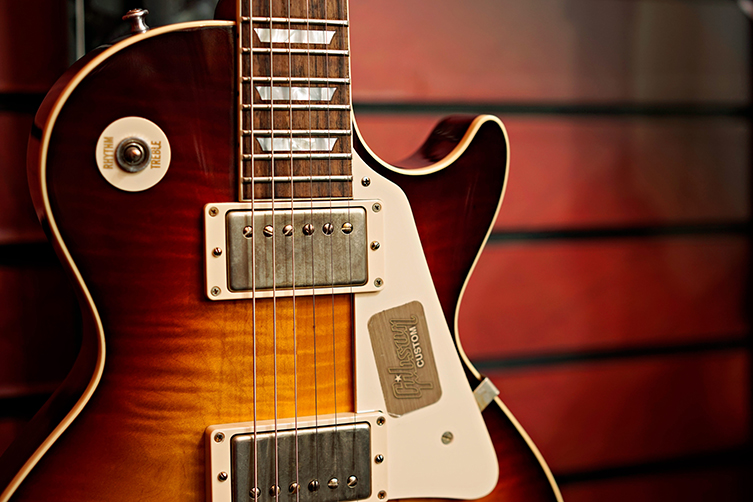
12. Coil-tap/coil-split
This is a type of circuit and it applies to humbucking pickups. People use the terms interchangeably, when in fact they do pretty different things. A coil-tap, when engaged, lowers the power of the humbucker by roughly half, resulting in less output and a thinner tone. Strictly, it does not give you a single coil sound, even though in practice it’s pretty close.
A coil-split, on the other hand, knocks one of the coils of a humbucker out of the circuit completely, meaning that there is only one coil in operation. Ergo, you do in fact get a relatively true single coil sound from your humbucking pickup. There's a bit more to it than this, and lots of guitarists can tell the difference between this and a ‘true' single coil sound, but that doesn’t diminish how useful both types of circuit are.
13. Active pickups
Active pickups are common these days. Active pickups use special circuitry and require additional power (i.e. they are not ‘passive’ like standard guitar pickups) from a 9V PP3 battery in order to work. There is normally a compartment within a guitar decked out with active pickups to accommodate this. Active pickups are generally high in output, but very low in background noise. This makes them effective with the heavy metal crowd, but they have more range than just that. A typical active pickup would be an EMG 81 humbucker.
One thing that nobody ever tells newbies about active pickups is that they are automatically switched on as soon as you insert your cable into the guitar's input. Bear that in mind! If the cable is left in after you've finished playing, the battery will just run down and down, and you'll quickly lose your sound altogether! Not good. Pull out the cable when you're done playing and you'll get much more longevity from your battery.
14. Active electronics
Active electronics are much more prevalent in basses than in guitars. Brands like Music Man and Sadowsky are famous for using active preamps and EQ circuits in their basses. This means that, with the help of a 9V PP3 battery, the active circuit can provide a more powerful sound (in the case of the preamp), or a very effective 2-or-3-band EQ boost and cut (in the case of Music Man Stingray basses). The same 'automatically on' situation we read about above applies here, too!
15. Patch
A patch is a programmed sound in a multi-FX processor or digital modeller. These devices let you save a selection of parameters (your favourite choice of amp model, EQ, effects and so on) in a memory location for later recall. These are called ‘patches’. Why? No idea. ‘Factory patches’ are set by the makers and can be used freely but generally not written over: they are in there for good. ‘User patches’ are patch locations for you to save your own creations to.
16. Patch cable
Patch cables are the little 6-inch or thereabouts cables that are used to connect effects pedals together into an FX chain. You need individual patch cables in between every pedal, with your regular guitar cable going into the first pedal and another similar cable connecting the last pedal to your amp. Why are they called ‘patch cables? Still no idea.

17. Wet/dry
This is simple enough. It refers to the use of effects: wet denotes the affected single (drenched in reverb, maybe) and Dry is your untouched signal. The context is usually a ‘mix’ control knob, where you’d dictate how much of your sound gets treated with the given effect. Wetter means there is more 'effect' on your sound.
18. Headroom
Headroom is how much clean volume you get from your amplifier before things start going downhill sonically. To put it simply, having a very loud amp set at three gives you lots of headroom for the peaks and troughs of your sound to work with, whereas a quieter amp maxed out may give you the same volume level but will be coughing and wheezing, at the edge of its ability. If you have an amp with a clean sound that starts breaking up into distortion when it’s only half-way up (in terms of the volume control), that would indicate that such an amp would have a low level of headroom. For distorted sounds, low headroom is fine and in fact contributes to the overdriven tone. For clean sounds, you want an amp with lots of headroom, or, to put it another way, 'high headroom'. This is why lots of guitar players seek out loud amplifiers like Fender Twins: it's less about ego and more about keeping their sound pristine as the volume dials up.
19. Gain/Distortion/Overdrive
These three separate terms all speak about the same thing: overloading the input of your amplifier so that it sounds like 'rock', for want of a more appropriate term. Distortion is actually the accidentally pleasing by-product of amplifiers doing their jobs inefficiently. Gain is simply volume, so turning up the gain on an amp means you are increasing the volume of the signal (your guitar) going into the amp. When the volume of the signal is more than the amplifier can handle, the sound becomes 'overdriven' or 'distorted'. This is a desirable thing for most of us! Amps with 'gain' or 'drive' controls (which is to say, nearly all amplifiers in existence) basically have this feature for overloading the signal built in. It's all very normal, since a distorted tone is largely what guitar players want, at least most of the time.
In terms of differentials, it has become tradition over the years to refer to lesser levels of overload as 'overdrive' and more extreme levels of overload as 'distortion'. In reality, they are exactly the same thing, just to a greater or lesser intensity. Distortion pedals and overdrive pedals achieve this same job, albeit from an extenral source (the pedal) rather than from within the input section of the amp itself. Amplifier and pedal brands will get quite elaborate in their descriptions of different types of overdrive and distortion, but at the heart of it, it's all just about overloading the signal so that it 'clips' and makes a harmonically rich, satisfying 'overdriven' sound. Everything after that is preference and details.
20. G.A.S
Gear-Acquisition-Syndrone. This is a condition that affects us all. It's harmless and good for you, so don't worry about it! If a fellow player 'complains' of having 'heavy GAS', simply smile and say 'Yeah, me too!' It's a mutual support system, available to all guitarists, to give each other moral permission to buy just one more guitar/amp/pedal/thing. Like we said: it's good for you! There's no cure.
21. Bottleneck
This is a nickname for a slide, the kind you wear on your finger. Back in the day, tougher guitarists than us would smash their Bud bottle against a table (presumably in a ‘Roadhouse’ somewhere) and use the neck of the bottle to play slide with. We do not advocate this, no matter how authentic you feel like being, when there are perfectly good slides available in every guitarguitar store. Bottlenecks come in different sizes and in different materials. 'Bottleneck slide' is also a way of describing the style of playing that occurs when such a thing is used. 'She has a great bottleneck style' would be something Blues players would both say and understand.
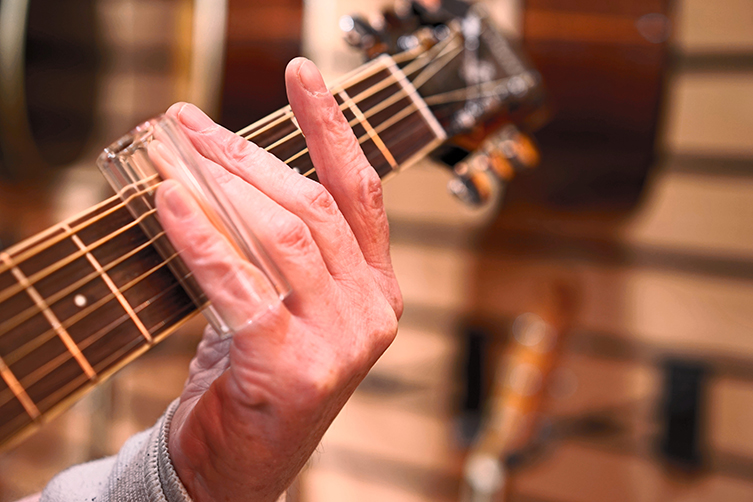
22. Pick scrape
Americans call plectrums ‘picks’, which is neither here nor there, but we concede that ‘pick scrape’ does sound better to say than ‘plectrum scrape’. Anyway, a pick scrape is when you take the edge of your plectrum and drag it along the length of any of your wound strings (the heavier ones). Changing the speed of scrape will alter the effect. Try it! We have not noticed any major difference to the quality of a pick scrape when altering plectrum gauge.
23. Hybrid-Picking
Hybrid-picking is where you somehow grip your plectrum and still get your other right-hand fingers involved in picking. It comes from banjo playing, which is really much harder to master than it lets on. Hold your plectrum normally between your thumb and index finger, then practice bringing your middle and ring fingers in when playing arpeggios. Voila! Hybrid-picking! Country players and Mastodon do this a lot.
24. Flat-picking
Flat-picking isn’t a term you often hear these days, unless people are trying to sound deliberately archaic. Why? It means simply playing your guitar with a plectrum. Yes, the thing you already do all the time! There is no difference, it’s just strumming away with a pleccy. Call it what it is, guys! In a slightly more serious tone, the term comes from the Appalachian Folk/Bluegrass scene, where people often use fingers and fingerpicks. A ‘flatpick’ is a distinction because you don’t wear them as claws, like you would with metal fingerpicks.
25. Face-Melter
A popular slang term for a particularly shreddy guitar solo. Example: 'That John Petrucci solo was a total face-melter.' Whether the term relates to the facial expression worn by the player in question (see Carlos Santana and Gary Moore for inexhaustable examples) or the act of literally having faces melt away in amazment at one's playing has not been definitively determined.
26. Djent
An onomatopoeic term for modern Heavy Metal subgenres that typically feature heavy, chugging 'Djent-djent-djent' guitar rhythms. The term is highy divisive within guitar communities but it does seem to be sticking! Djent bands routinely feature extended range 7 and 8 string guitars, all tuned to unfathomably low pitches. Examples of Djent bands: Meshuggah, Periphery, Animals As Leaders.
27. Valve/Tube
Valves are the European way of saying Tubes. Both are vacuum tubes, which is very old, WWII-era technology that gets used in guitar and bass amplifier making because they happen to help make electric guitars sound pretty great. Find yourself a valve amp and have a look in the back. Those lightbulb-like things that are glowing? Valves! Preamp tubes are smaller and kind of create the sound. Power amp tubes are bigger and deal with much larger voltages after the signal goes through a transformer. All valves can blow, yes, just like lightbulbs, except they are significantly more expensive than lightbulbs. Fender Twins, Vox AC30s and Mesa Boogie amps are all examples of valve amps.
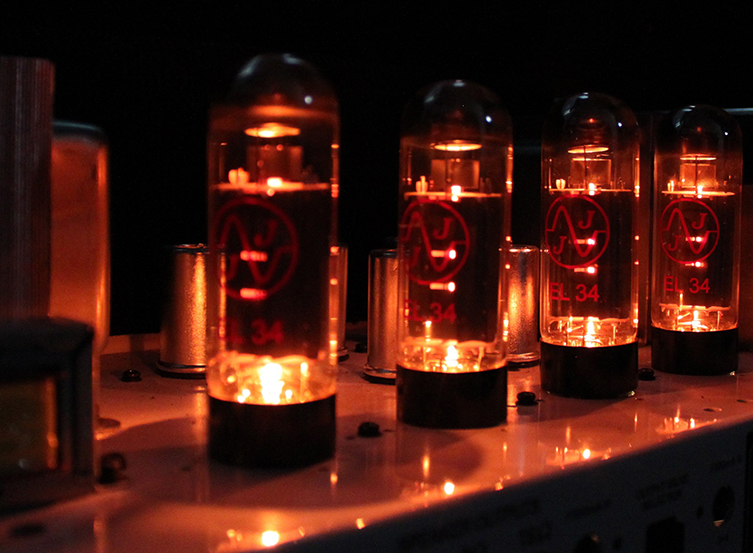
28. Solid state
A solid-state amp is the non-valve option for amplification. The other term for this is ‘transistor’, though more often than not, solid-state amps are becoming digital CPUs. Practise amps with loads of features (Line 6 Spider, Boss Katana etc etc) are solid state in nature.
29. Neck joins
There are three main ways to join an electric guitar’s neck to its body. Bolt-on, or bolted-on, is the most common way. The neck is literally bolted in with 4 long screws (not bolts: yeah, we know...) and is easy to both adjust and replace. Stratocasters and guitars like that employ this technique.
A set neck is when the neck is glued directly to the body. Les Pauls, Flying V’s and those types of guitars have set necks. Sustain is usually better but you can hardly take it off and put it back on in ten minutes like you can with a bolt-on neck. The overall 'feel' is different but feel is subjective so it's neither better nor worse.
Lastly, neck-through instruments are when the neck actually makes up some of the body too. The neck wood carries on past the end of the fretted neck itself through the entire length of the instrument, with two ‘wings’ being added on either side to finish the body. Again, sustain is a thing here but they are also known for strength and stability. A through-neck can also be a visual consideration, since they often look lovely. See the pic below for ample proof!
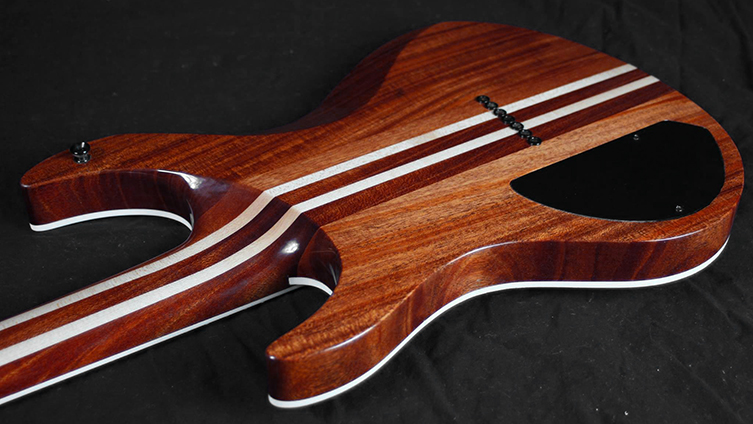
You're a Guitargon Master!
Now you know the lingo! How does it feel? Are you more confident? Do you feel like you've learned all of the hand signals and patois of a secret gang?
We hope so. Nothing is worse than mixing up one's terms when trying to sound knowledgeable. Now you have a working handle on Guitargon. You're unstoppable!
We expect we'll continue to add to this magnificent list as and when we can, so if you have helpful inclusions, we'll definitely take them and pass them off as our own ideas. Sorry, we mean we'll incorporate them in a future update!
In the meantime, thanks for reading! Good luck with your playing.


